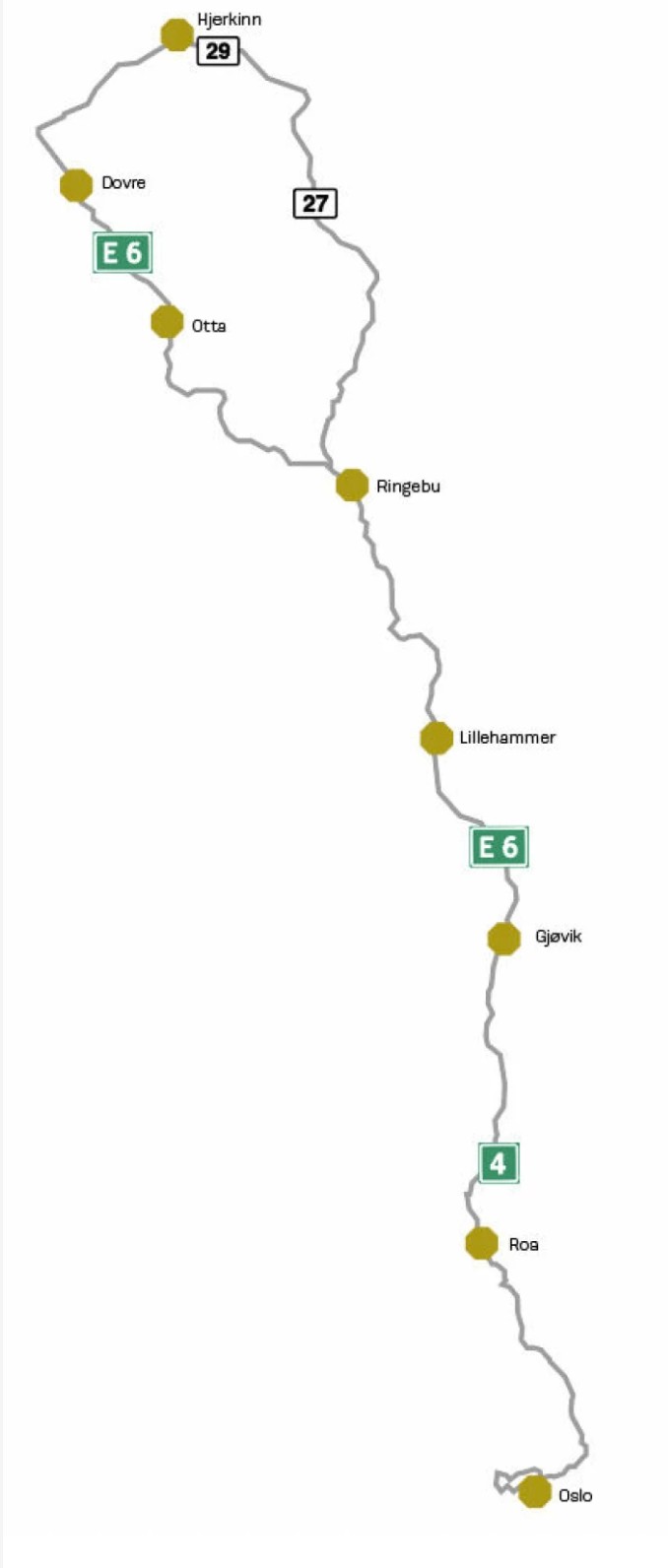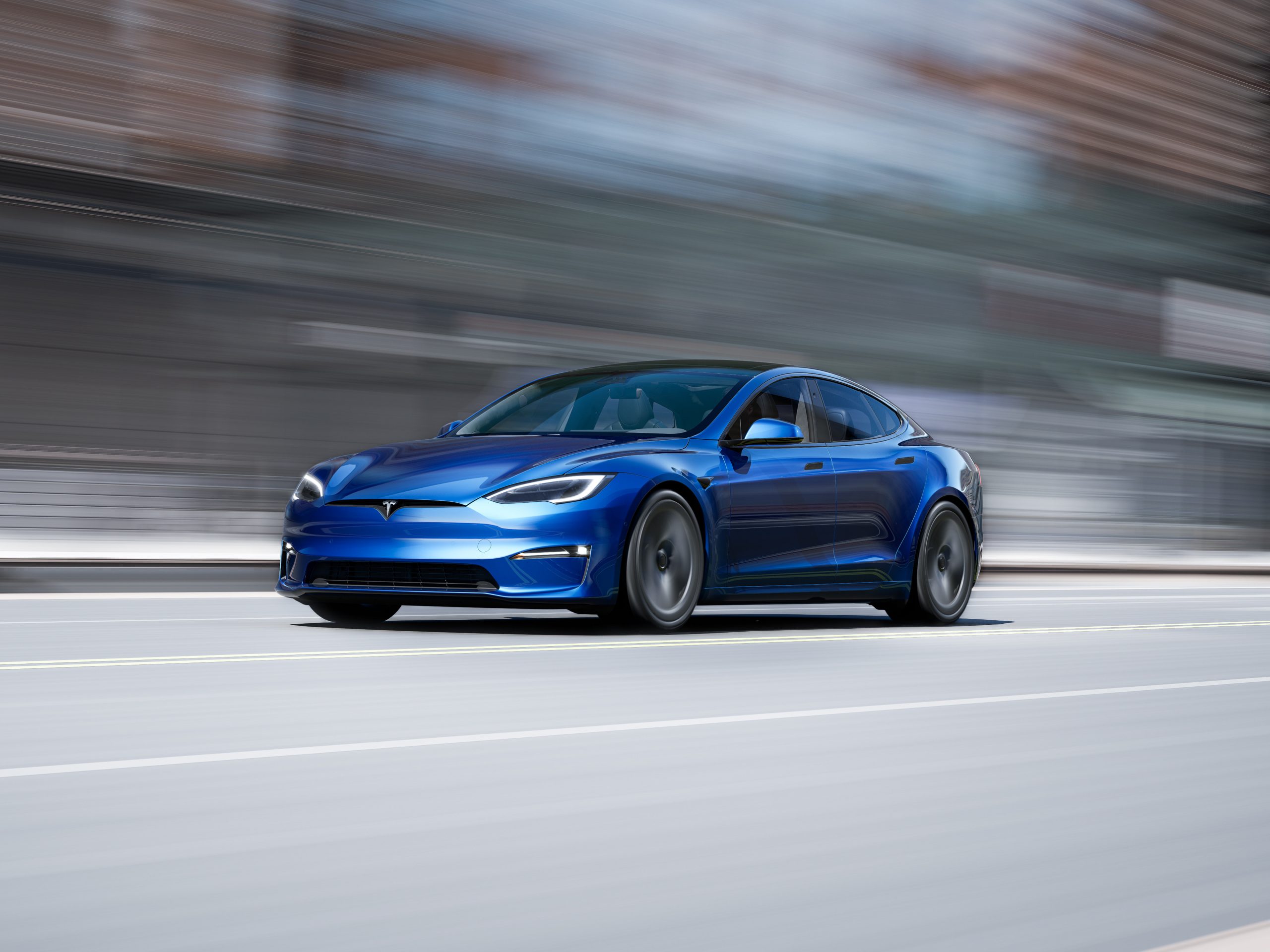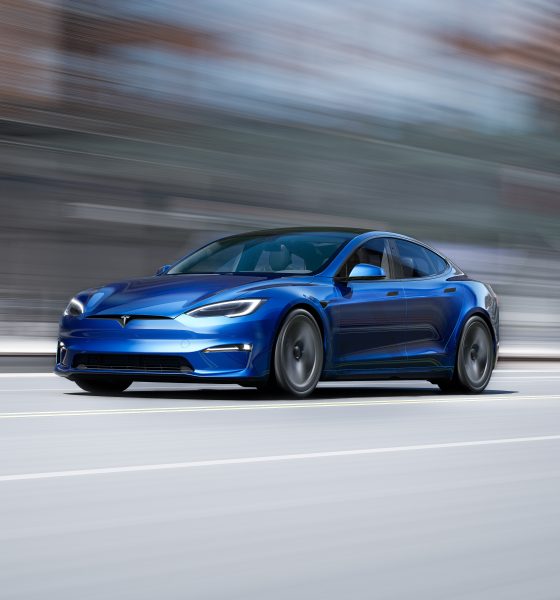The Tesla Model S recently dominated an extreme cold-weather testing study performed by Norweigan outlet Motor, accumulating 530 kilometers (329.327 miles) in some of the harshest Winter conditions available.
Of the twenty-nine electric vehicles tested during the assessment, the Model S was the only vehicle to achieve at least 450 kilometers of real-world driving range in frigid temperatures and snowy terrain.
Model S sets new record in the world’s biggest EV range test in Norway ❄️ → https://t.co/EJn7mt7Hdy
— Tesla Europe (@tesla_europe) February 1, 2023
The study utilized a variety of EVs from several different manufacturers. Tesla Model S “Standard,” Model X Plaid, and Model Y Rear-Wheel-Drive vehicles participated in the study, with Mercedes EQE 300, BMW i7, Volkswagen’s ID.5 and ID.BUZZ also taking part.
The publication broke down how it tests vehicles to maintain a fair and equal opportunity for desirable results. The test is performed every six months, winter and summer, following the same route:
“A loop through Oslo, up Rv4 to Gjøvik, from there E6 up to Hjerkinn, then east and around Rondane over Venabygdsfjellet, down to Ringebu and up E6 again.”
Credit: Motor
The cars are driven at the speed limit until their charge is depleted, and no driver support systems, such as cruise control, are permitted during the test.
Impressive in its own right, the Model S achieved a massive 530 kilometers of range on a single charge. Despite only being charged 98 percent “due to a technical problem,” the Model S Dual Motor All-Wheel Drive didn’t have a very close competitor. In fact, the vehicle that came closest was the Tesla Model X Plaid, which achieved 444 kilometers (275.889 miles). Right behind it were the BMW i4 and NINE ET7, which both achieved 434 kilometers before depleting their travel distance.
The Model S also had one of the lowest deviations from its WLTP range ratings, coming in at 16.40 percent. Of the top ten performing vehicles, the Model S had the lowest, with the Model X coming in second with 18.23 percent.
| Model | WLTP range | Achieved range | Percentage deviation, range |
| Tesla Model S Standard | 634 | 530 | -16.40% |
| Mercedes EQE 300 | 614 | 409 | -33.39% |
| BMW i7 xDrive60 | 595 | 424 | -28.74% |
| NINE ET7 | 580 | 434 | -25.17% |
| BMW i4 eDrive40 | 565 | 434 | -23.19% |
| Tesla Model X Plaid | 543 | 444 | -18.23% |
| Nissan Ariya 2WD | 533 | 400 | -24.95% |
| Volkswagen ID.5 Pro | 526 | 378 | -28.14% |
| Bid Han | 521 | 406 | -22.07% |
| Hongqi E-HS9 prototype 120 kWt | 515 | 389 | -24.47% |
Tesla has battled range loss in colder climates with a variety of techniques, including the most notable, which is the heat pump.
After including the heat pump on the Model Y, Tesla eventually implemented it on its three other vehicles, with the Model S and Model X receiving the addition with its Refreshed cars in 2021.
Elon Musk once said the heat pump was “some of the best engineering I’ve seen in a while.” It was developed by Joseph Mardall and other members of the Tesla engineering team. Mardall left Tesla in early 2021 to join Zipline, a robotics and autonomy-focused logistics company.
Another fun fact: the Model S beat the record set by the 2021 Tesla Model 3 Dual Motor Long Range, which made it 521 kilometers (323.734 miles).
I’d love to hear from you! If you have any comments, concerns, or questions, please email me at joey@teslarati.com. You can also reach me on Twitter @KlenderJoey, or if you have news tips, you can email us at tips@teslarati.com.

News
Tesla FSD fleet is nearing 7 billion total miles, including 2.5 billion city miles
As can be seen on Tesla’s official FSD webpage, vehicles equipped with the system have now navigated over 6.99 billion miles.

Tesla’s Full Self-Driving (Supervised) fleet is closing in on almost 7 billion total miles driven, as per data posted by the company on its official FSD webpage.
These figures hint at the massive scale of data fueling Tesla’s rapid FSD improvements, which have been quite notable as of late.
FSD mileage milestones
As can be seen on Tesla’s official FSD webpage, vehicles equipped with the system have now navigated over 6.99 billion miles. Tesla owner and avid FSD tester Whole Mars Catalog also shared a screenshot indicating that from the nearly 7 billion miles traveled by the FSD fleet, more than 2.5 billion miles were driven inside cities.
City miles are particularly valuable for complex urban scenarios like unprotected turns, pedestrian interactions, and traffic lights. This is also the difference-maker for FSD, as only complex solutions, such as Waymo’s self-driving taxis, operate similarly on inner-city streets. And even then, incidents such as the San Francisco blackouts have proven challenging for sensor-rich vehicles like Waymos.
Tesla’s data edge
Tesla has a number of advantages in the autonomous vehicle sector, one of which is the size of its fleet and the number of vehicles training FSD on real-world roads. Tesla’s nearly 7 billion FSD miles then allow the company to roll out updates that make its vehicles behave like they are being driven by experienced drivers, even if they are operating on their own.
So notable are Tesla’s improvements to FSD that NVIDIA Director of Robotics Jim Fan, after experiencing FSD v14, noted that the system is the first AI that passes what he described as a “Physical Turing Test.”
“Despite knowing exactly how robot learning works, I still find it magical watching the steering wheel turn by itself. First it feels surreal, next it becomes routine. Then, like the smartphone, taking it away actively hurts. This is how humanity gets rewired and glued to god-like technologies,” Fan wrote in a post on X.
News
Tesla starts showing how FSD will change lives in Europe
Local officials tested the system on narrow country roads and were impressed by FSD’s smooth, human-like driving, with some calling the service a game-changer for everyday life in areas that are far from urban centers.

Tesla has launched Europe’s first public shuttle service using Full Self-Driving (Supervised) in the rural Eifelkreis Bitburg-Prüm region of Germany, demonstrating how the technology can restore independence and mobility for people who struggle with limited transport options.
Local officials tested the system on narrow country roads and were impressed by FSD’s smooth, human-like driving, with some calling the service a game-changer for everyday life in areas that are far from urban centers.
Officials see real impact on rural residents
Arzfeld Mayor Johannes Kuhl and District Administrator Andreas Kruppert personally tested the Tesla shuttle service. This allowed them to see just how well FSD navigated winding lanes and rural roads confidently. Kruppert said, “Autonomous driving sounds like science fiction to many, but we simply see here that it works totally well in rural regions too.” Kuhl, for his part, also noted that FSD “feels like a very experienced driver.”
The pilot complements the area’s “Citizen Bus” program, which provides on-demand rides for elderly residents who can no longer drive themselves. Tesla Europe shared a video of a demonstration of the service, highlighting how FSD gives people their freedom back, even in places where public transport is not as prevalent.
What the Ministry for Economic Affairs and Transport says
Rhineland-Palatinate’s Minister Daniela Schmitt supported the project, praising the collaboration that made this “first of its kind in Europe” possible. As per the ministry, the rural rollout for the service shows FSD’s potential beyond major cities, and it delivers tangible benefits like grocery runs, doctor visits, and social connections for isolated residents.
“Reliable and flexible mobility is especially vital in rural areas. With the launch of a shuttle service using self-driving vehicles (FSD supervised) by Tesla in the Eifelkreis Bitburg-Prüm, an innovative pilot project is now getting underway that complements local community bus services. It is the first project of its kind in Europe.
“The result is a real gain for rural mobility: greater accessibility, more flexibility and tangible benefits for everyday life. A strong signal for innovation, cooperation and future-oriented mobility beyond urban centers,” the ministry wrote in a LinkedIn post.
News
Tesla China quietly posts Robotaxi-related job listing
Tesla China is currently seeking a Low Voltage Electrical Engineer to work on circuit board design for the company’s autonomous vehicles.

Tesla has posted a new job listing in Shanghai explicitly tied to its Robotaxi program, fueling speculation that the company is preparing to launch its dedicated autonomous ride-hailing service in China.
As noted in the listing, Tesla China is currently seeking a Low Voltage Electrical Engineer to work on circuit board design for the company’s autonomous vehicles.
Robotaxi-specific role
The listing, which was shared on social media platform X by industry watcher @tslaming, suggested that Tesla China is looking to fill the role urgently. The job listing itself specifically mentions that the person hired for the role will be working on the Low Voltage Hardware team, which would design the circuit boards that would serve as the nervous system of the Robotaxi.
Key tasks for the role, as indicated in the job listing, include collaboration with PCB layout, firmware, mechanical, program management, and validation teams, among other responsibilities. The role is based in Shanghai.
China Robotaxi launch
China represents a massive potential market for robotaxis, with its dense urban centers and supportive policies in select cities. Tesla has limited permission to roll out FSD in the country, though despite this, its vehicles have been hailed as among the best in the market when it comes to autonomous features. So far, at least, it appears that China supports Tesla’s FSD and Robotaxi rollout.
This was hinted at in November, when Tesla brought the Cybercab to the 8th China International Import Expo (CIIE) in Shanghai, marking the first time that the autonomous two-seater was brought to the Asia-Pacific region. The vehicle, despite not having a release date in China, received a significant amount of interest among the event’s attendees.










